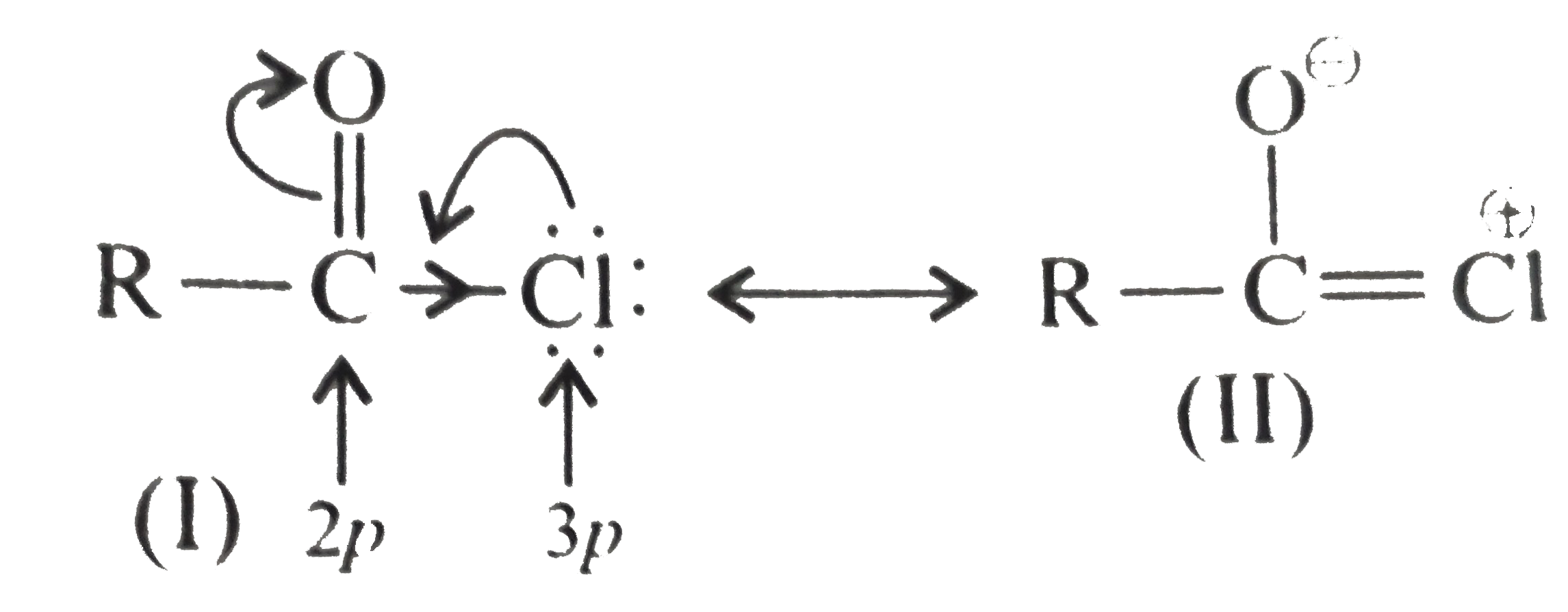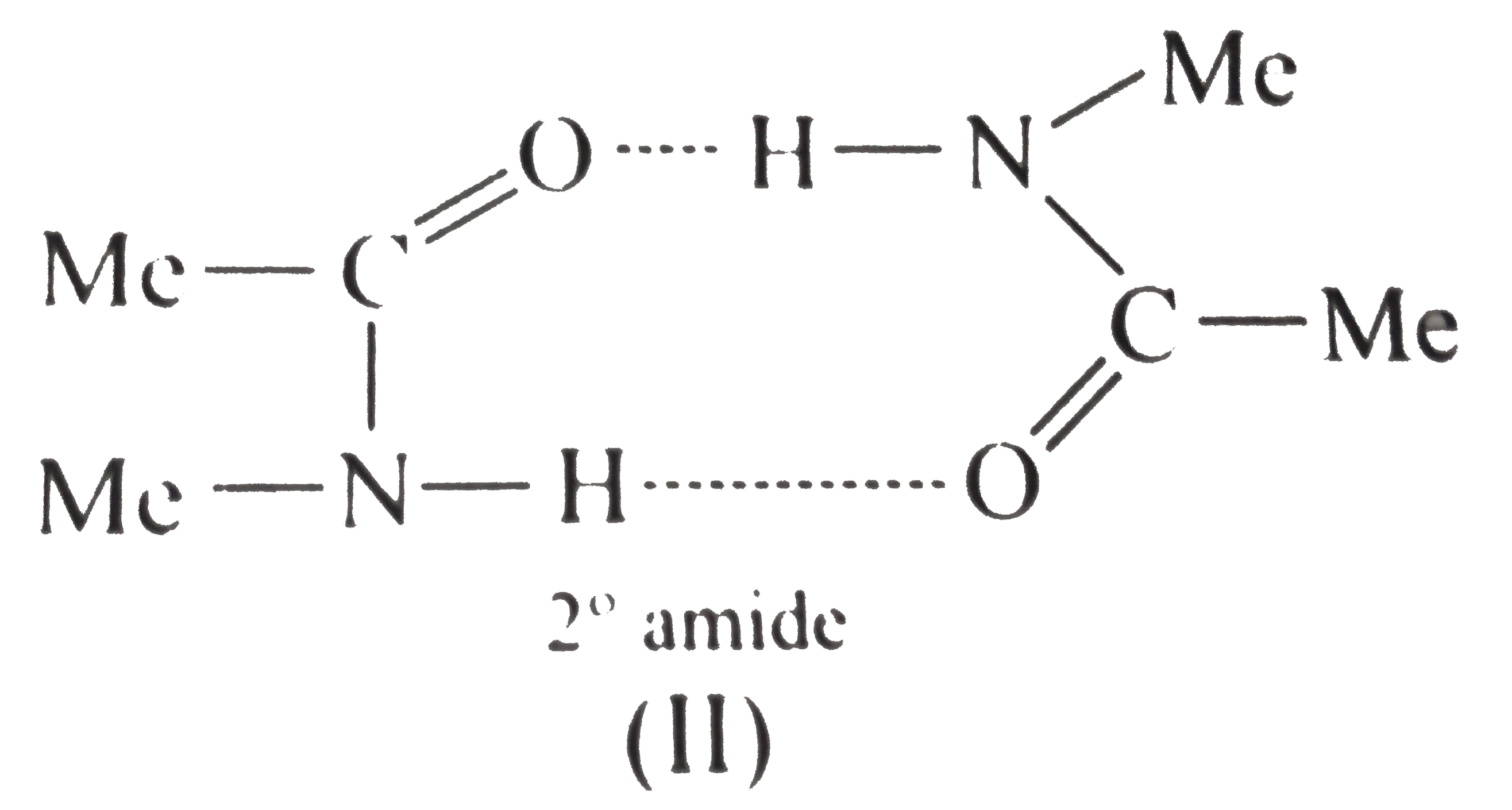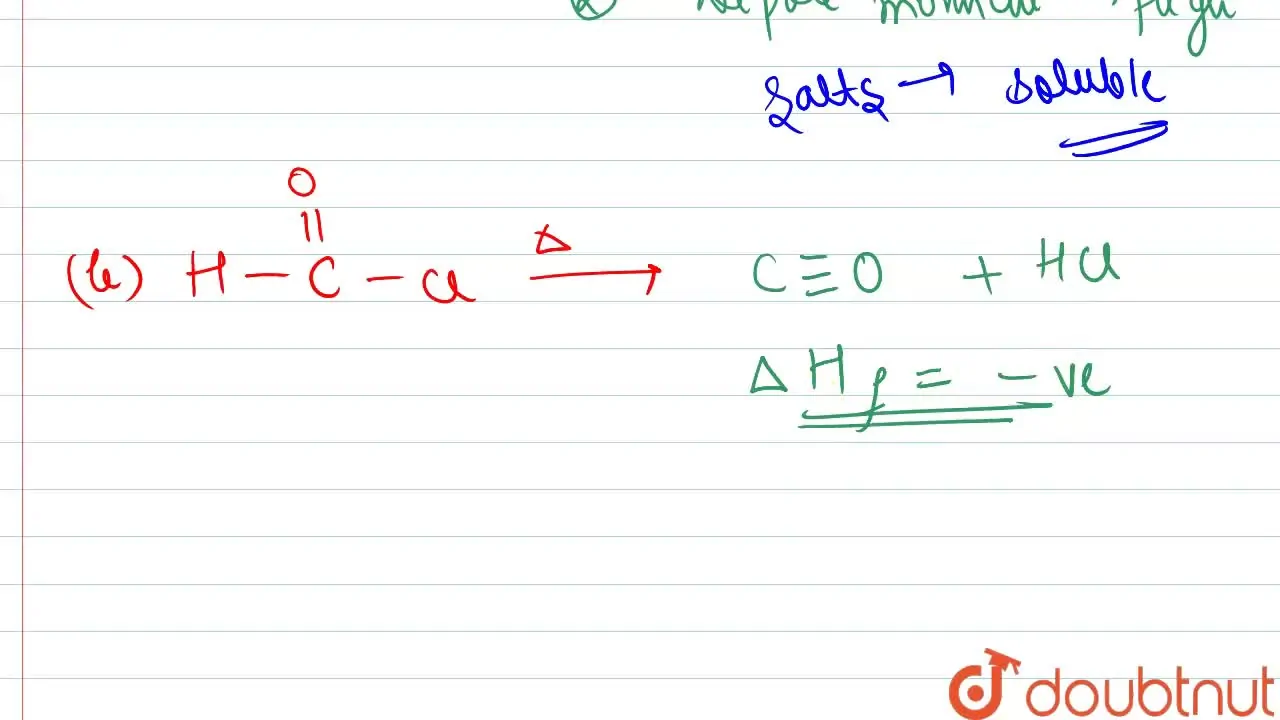(a) Why is DMF (dimethyl formamide) a useful solvent ?
(b) Why is formyl chloride unstable ?
Video Solution
Text Solution
(a) Nearly te same (C−Cl) bond length in ⎛⎜
⎜⎝R−O∣∣C−CI⎞⎟
⎟⎠ and (R−Cl) suggests that the extent of delocalisation by Cl in ⎛⎜
⎜⎝R−O∣∣C−CI⎞⎟
⎟⎠ is very small or non-existent [(−I) and (+R) effects of Cl,(+R) effect or π−bond overlap is not effective because of 2p of C and 3p of Cl overlap]. So, the contribution of resonance hybrid structure (II) is very small or non-existent.

(b) The relative importance of delocalisation decreases in the order RCONH2>RCOOR'>RCOX. as the EN (electronegativity) of G increases in the same period (i.e., (−I) effect increase, from N>O>X.
The (C−Cl) bond is longer than the (C−F) bond, although EN of F is greater than Cl. However, (+R) effect is not effective in (C−Cl) but effective in (C−F) because of the effective overlap of 2p of C with 2p of F.
( c) Resonance structure of anhydride.

Cross conjugation in the resonance structures of anhydride decreases the delocalisation of each O of (C=O) group and gives (C−O)σ−bond less double-bond characte. Thus, the (C−O) bond length is longer in anhydrides than in esters.
(d) Resonance structure of esters :

Due to delocalisation of ¯e,s in esters, the positive charge on C of the (C=O) group is more spread out. This results in a smaller dipole moment and weater dipole-dipole attraction in esters than in ketones. So, esters have low boiling in ester points than ketones.
Acids have strong intermolecular H−bonding, while esters do not have. So the boiling points of esters are lower than those of acids.
( e) 1∘ and 2∘ amides exist as dimer in the solid and pure liquid state through intermolecular H−bonding. 1∘ amides have two H atoms. While 2∘ amides have one H atom. So intermolecular H−bonding is more in 1∘ amide than in 2∘ amides. 3∘ amdies lack H atoms and thus do not have H−bonding.
So, the boinling points of 1∘amI>2∘amII>3∘amIII.

(f) DMF,⎛⎜
⎜⎝H−O∣∣C−N∣Me−Me⎞⎟
⎟⎠ , is an aprotic solvent, i.e., it has no H atom for H−bond∈g and has a high dipole moment. So DMF does not form H−bonds with anions although it dissolves many ionic compounds. The salts are dissolved through solvation of the cation by the attraction towards the end of the (C−O) dipole. The positive end of the dipole  shielded within the molecule and solvates anion very weakly.
shielded within the molecule and solvates anion very weakly.
(g) ⎛⎜
⎜⎝H−O∣∣C−CIΔ−−→C≡O+HX⎞⎟
⎟⎠
The decomposition reaction is favoured since the ΔH∘f of CO is high (more negative) which indicates the stability of (C≡O) bond. Formyl chloride is unstable above 213K(−60∘C).
|
Updated on:21/07/2023
Related Playlists
- BOOK - CENGAGE CHEMISTRY ENGLISHCHAPTER - CARBOXYLIC ACIDS AND THEIR DERIVATIVESEXERCISE - Solved Examples17videos
CARBOXYLIC ACIDS AND THEIR DERIVATIVES
- BOOK - CENGAGE CHEMISTRY ENGLISHCHAPTER - CARBOXYLIC ACIDS AND THEIR DERIVATIVESEXERCISE - Exercises (Subjective)19videos
CARBOXYLIC ACIDS AND THEIR DERIVATIVES
- BOOK - CENGAGE CHEMISTRY ENGLISHCHAPTER - BIOMOLECULESEXERCISE - Exercises Archives (Analytical And Descriptive)8videos
BIOMOLECULES
- BOOK - CENGAGE CHEMISTRY ENGLISHCHAPTER - CHEMICAL KINETICSEXERCISE - Archives Subjective23videos
CHEMICAL KINETICS
Similar Questions
Why are heavy nuclei usually unstable?
View SolutionWhy is water called a universal solvent ? How is this useful ?
View SolutionWhy Cr is used for coating Fe ?
View SolutionWhy is water called the universal solvent?
View SolutionWhat is chromyl chloride test? Why is it so named?
View SolutionWhy is hydrogen peroxide used as a bleaching agent ?
View SolutionWhy the halogen compounds used as solvents in industry are chlorides rather than bromides?
View SolutionWhy is diethyl ether used as solvent in the prparation of Grignard reagents ?
View SolutionWhy is hydrogen chloride not collected over water ?
View SolutionWhy do alkyl chlorides have higher dipole moment as compared to aryl chlorides ?
View Solution


